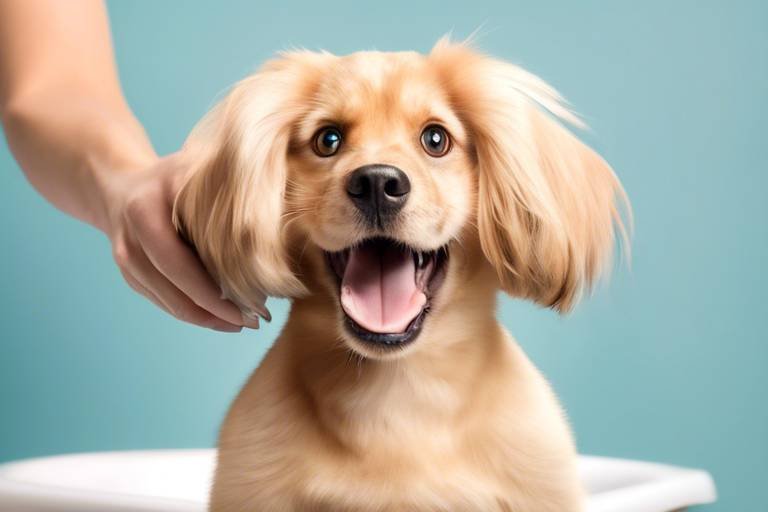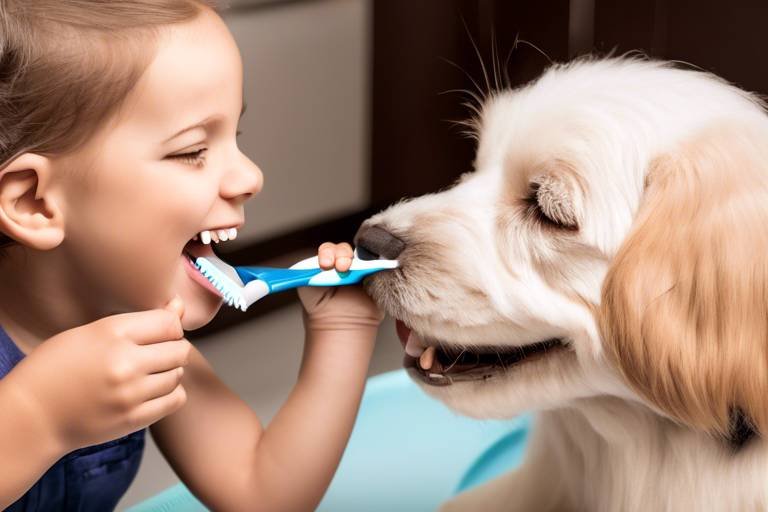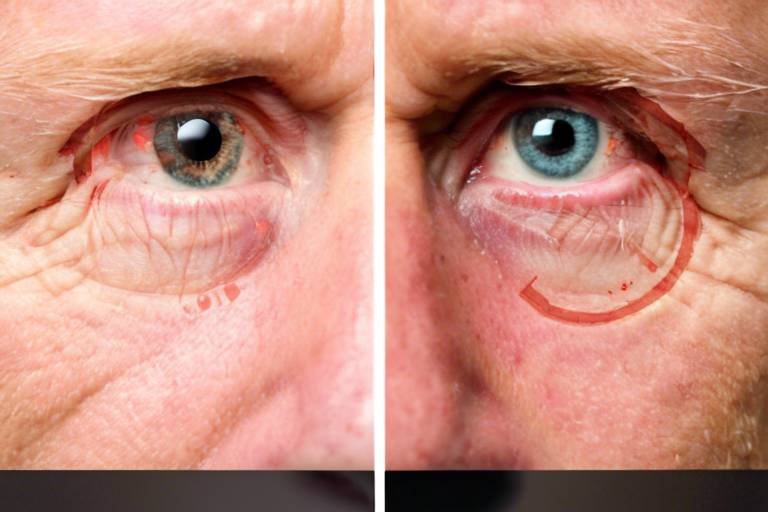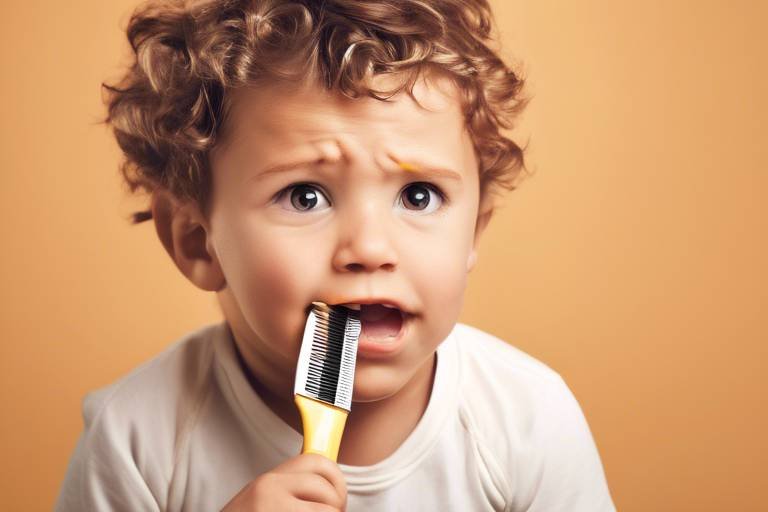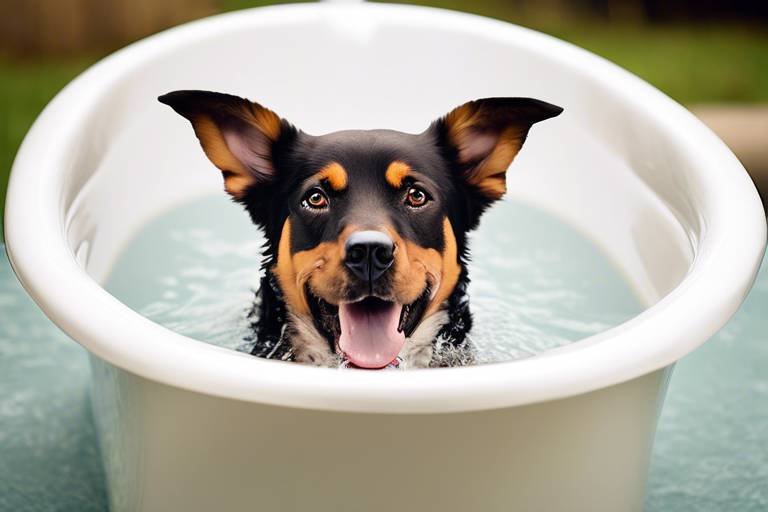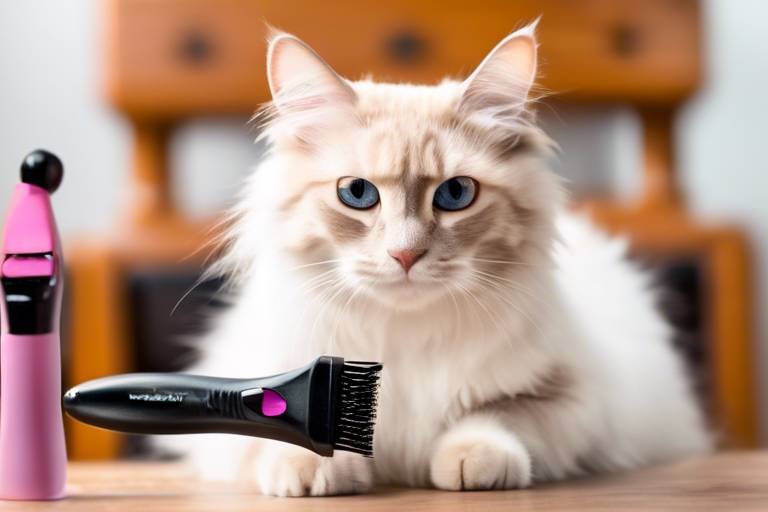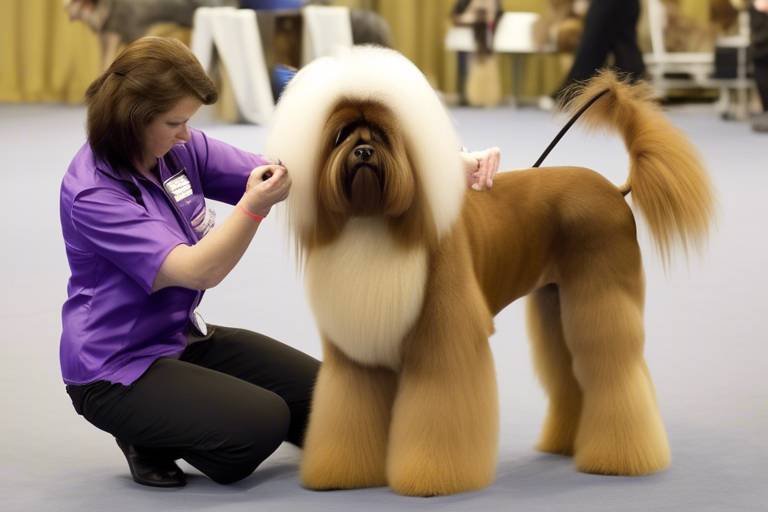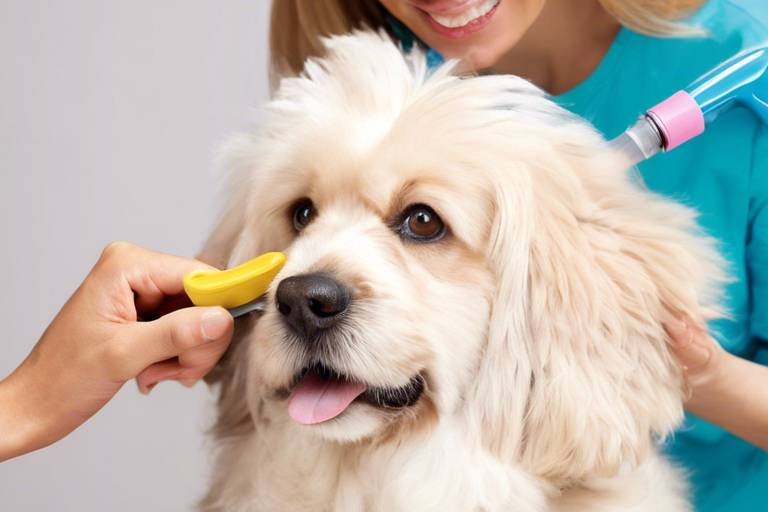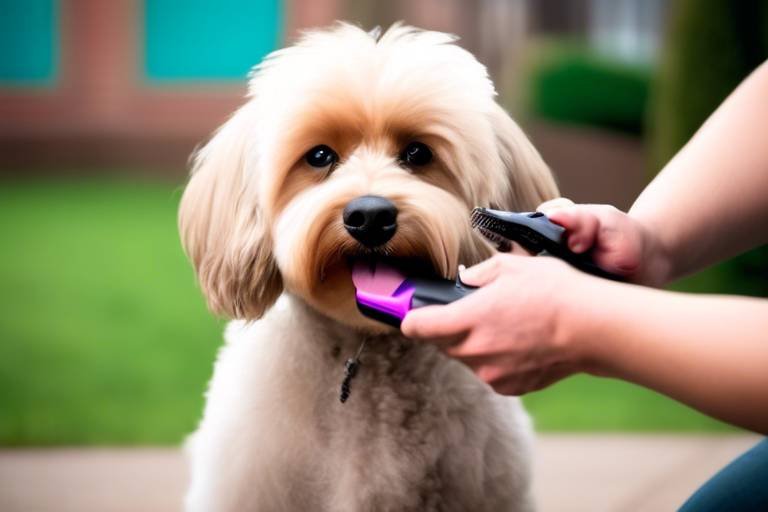The Importance of Grooming for New Pets
Grooming is essential for the health and happiness of new pets. It’s not just about making them look good; it’s about ensuring they feel good too! Imagine your pet as a canvas; with each grooming session, you're not only enhancing their appearance but also promoting their overall well-being. Just like we humans feel refreshed after a nice shower or haircut, pets experience a similar sense of comfort and cleanliness through grooming. This article explores various aspects of grooming, including techniques, benefits, and tips for pet owners to ensure their furry friends are well cared for.
Pet grooming involves more than just aesthetics; it plays a critical role in a pet's overall health. When we think about grooming, we often picture brushing fur or trimming nails, but it encompasses a wide range of activities. From bathing and brushing to ear cleaning and nail trimming, grooming is a comprehensive approach to pet care. It should be a priority for every pet owner because it directly affects not only the pet's physical health but also their emotional well-being. Just like regular check-ups at the doctor, grooming is a vital part of maintaining a pet’s health. By keeping up with grooming, pet owners can prevent many health issues before they even arise.
Regular grooming provides numerous benefits, including improved hygiene, reduced shedding, and early detection of health issues. Think of grooming as a way of saying, "I care about you!" to your pet. When you groom them, you’re not just cleaning them up; you're also engaging in a bonding experience that strengthens your relationship. This section discusses these advantages and how they contribute to a pet’s well-being. Here are some key benefits:
- Improved Hygiene: Regular grooming helps to keep your pet clean and free from dirt and parasites.
- Reduced Shedding: Brushing your pet regularly can significantly reduce the amount of fur that ends up on your furniture and clothes.
- Early Detection of Health Issues: Regular grooming allows you to spot any unusual lumps, bumps, or skin irritations early on.
Grooming helps maintain a pet's skin and coat health, preventing issues like matting and skin infections. Just like a well-maintained garden flourishes, a well-groomed pet thrives! This subsection details the specific health advantages of keeping your pet groomed. For instance, regular brushing removes dead hair and dirt, which can lead to skin irritations if left unchecked. Additionally, grooming promotes better blood circulation, which is essential for a healthy coat.
Proper grooming helps remove dirt, debris, and dead hair, which can lead to skin irritations. Think of your pet’s skin as a protective barrier; when it’s clean and healthy, it can fend off infections more effectively. Regular grooming not only keeps the coat shiny and healthy but also provides an opportunity to check for any unusual signs, such as redness or inflammation. This part emphasizes the importance of skin care in grooming routines.
Cleaning ears and eyes is essential to prevent infections. Just like we use eye drops or ear drops to maintain our health, pets also require similar care. Grooming can help maintain these sensitive areas of your pet's health. Regularly checking and cleaning your pet's ears can prevent wax buildup and infections, while wiping around the eyes can help avoid tear staining and irritation. This section explains how grooming can help maintain these sensitive areas of your pet's health.
Grooming can enhance a pet's emotional health by providing comfort and bonding time with their owner. It’s a time to relax, cuddle, and enjoy each other’s company. This subsection explores the psychological benefits of regular grooming sessions. Pets thrive on routine and predictability, and a regular grooming schedule can provide them with a sense of security. Plus, the act of grooming can be soothing for both pets and their owners, creating a peaceful moment in a busy day.
Knowing the right tools and techniques is vital for effective grooming. Just like a chef needs the right knives to create a delicious meal, pet owners need specific grooming tools to keep their pets looking and feeling their best. This section introduces essential grooming tools and methods for different types of pets. The right tools can make all the difference, and understanding how to use them properly can turn grooming into a fun and rewarding experience.
A variety of grooming tools are available, each designed for specific tasks. For instance, a slicker brush is great for detangling, while a comb can help remove loose hair and dirt. This subsection describes the must-have tools for every pet owner to ensure effective grooming. Here’s a quick overview of some essential grooming tools:
| Tool | Purpose |
|---|---|
| Slicker Brush | Detangling fur |
| Undercoat Rake | Removing loose undercoat |
| Grooming Gloves | Gentle brushing and massaging |
| Nail Clippers | Trimming nails |
Different breeds require unique grooming techniques. For example, long-haired breeds like the Afghan Hound need more frequent brushing compared to short-haired breeds like the Beagle. This section provides insights into how to tailor grooming practices based on a pet's breed and coat type. Understanding these nuances can help pet owners provide the best care for their furry friends, ensuring that their grooming routine is not just effective but also enjoyable for both pet and owner.
Q: How often should I groom my pet?
A: It depends on the breed and coat type. Long-haired breeds may need grooming several times a week, while short-haired breeds may require less frequent grooming.
Q: Can I groom my pet at home?
A: Absolutely! With the right tools and techniques, you can groom your pet at home. Just be sure to take your time and make it a positive experience.
Q: What if my pet doesn't like being groomed?
A: Start slowly and make grooming a fun experience with treats and praise. Gradually increase the duration and frequency of grooming sessions to help them get used to it.
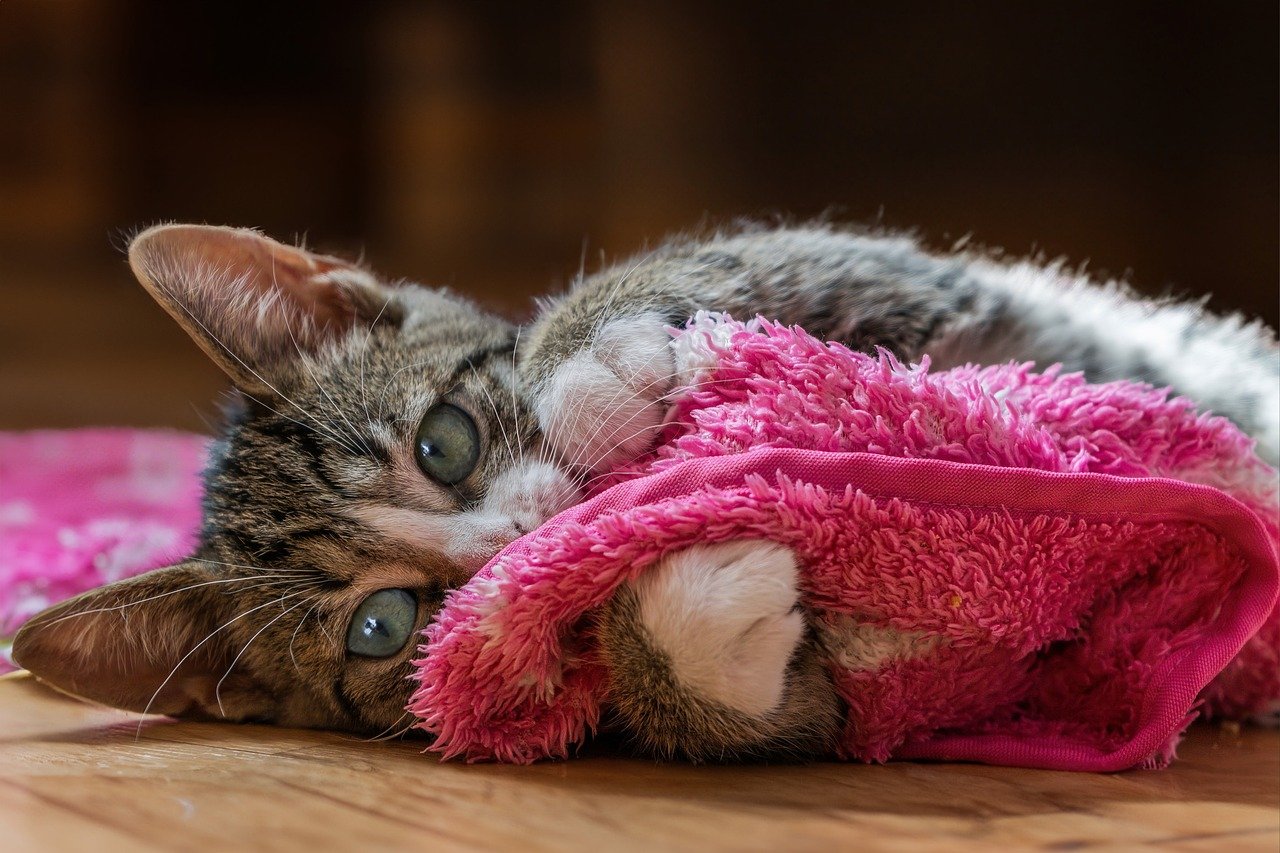
Understanding Pet Grooming
When we think about grooming our pets, many of us picture a fluffy dog getting its coat brushed or a cat being pampered with a gentle bath. However, grooming is so much more than just keeping your pet looking good; it’s a vital component of their overall health and well-being. Just like we need regular check-ups and personal care, our furry friends do too! Grooming encompasses a variety of tasks that go beyond mere aesthetics, including bathing, brushing, nail trimming, and even cleaning sensitive areas like ears and eyes.
So, why should grooming be a top priority for pet owners? Well, it’s not just about avoiding that dreaded pet odor or keeping your home fur-free (though those are certainly nice perks!). Regular grooming can significantly impact your pet's physical and emotional health. Think of grooming as a preventive measure—it helps catch potential health issues before they escalate, ensuring your pet stays happy and healthy.
Moreover, grooming sessions can serve as a bonding experience between you and your pet. Have you ever noticed how much your dog enjoys a good scratch behind the ears or how your cat purrs while you brush its fur? These moments of connection are not only enjoyable for your pet but also strengthen the trust and affection between you. In essence, grooming is a two-way street—it benefits both you and your beloved animal.
In this section, we’ll dive deeper into what grooming involves and why it should be an integral part of your pet care routine. Here are some key components of pet grooming:
- Brushing: Essential for removing loose fur and preventing matting.
- Bathing: Keeps your pet clean and helps maintain skin health.
- Nail Trimming: Prevents overgrowth and discomfort.
- Ear Cleaning: Reduces the risk of infections.
- Dental Care: Important for preventing tooth decay and gum disease.
As you can see, grooming is a multifaceted process that requires attention and care. Whether you have a long-haired breed that needs frequent brushing or a short-haired companion that requires occasional baths, understanding the specific grooming needs of your pet is essential. By prioritizing grooming, you not only enhance your pet's appearance but also contribute to their overall health and happiness.

Benefits of Regular Grooming
Regular grooming is not just about making your pet look fabulous; it’s a crucial aspect of their overall health and happiness. Think of grooming as a way to tune up your pet's well-being, just like you would take your car for a service to keep it running smoothly. The advantages of consistent grooming are numerous, and they all contribute to a more enjoyable life for both you and your furry friend.
One of the most significant benefits of regular grooming is improved hygiene. When you groom your pet, you’re not only brushing away loose fur, but you’re also removing dirt, debris, and other nasty bits that can accumulate in their coat and skin. This process helps to keep your pet clean and can significantly reduce the risk of skin infections and irritations. Imagine how refreshing it feels to take a shower after a long day; your pet feels the same way when they’re groomed!
Another perk of regular grooming is reduced shedding. Let’s face it: as pet owners, we all know the struggle of dealing with pet hair all over our clothes and furniture. Regular brushing can help minimize this issue by removing loose hair before it ends up on your favorite couch. Plus, less shedding means a cleaner home, which is a win-win for everyone involved!
But the benefits don’t stop there. Regular grooming sessions serve as an excellent opportunity for early detection of potential health issues. While you’re brushing or bathing your pet, you might notice unusual lumps, bumps, or changes in their skin or coat. This early detection can be critical in addressing health problems before they escalate into something more serious. It’s like having a mini vet check-up right at home!
To summarize, regular grooming offers a multitude of benefits that enhance your pet's quality of life:
- Improved hygiene: Keeps your pet clean and reduces the risk of infections.
- Reduced shedding: Less fur around the house means a cleaner living environment.
- Early detection of health issues: Allows for timely intervention if any problems arise.
So, if you want your pet to thrive, make grooming a regular part of your routine. It’s a simple yet effective way to show your love and care for your furry companion!
1. How often should I groom my pet?
The frequency of grooming depends on your pet's breed, coat type, and activity level. Generally, long-haired breeds may require grooming several times a week, while short-haired breeds might only need it once a month.
2. Can I groom my pet at home?
Absolutely! Many grooming tasks can be done at home, such as brushing and bathing. However, for more specialized grooming needs, such as nail trimming or ear cleaning, you may want to consult a professional groomer.
3. What tools do I need for grooming?
Essential grooming tools include brushes, combs, nail clippers, and pet-safe shampoos. Depending on your pet's specific needs, you may want to invest in more specialized tools.
4. How do I make grooming a positive experience for my pet?
Start slowly and use treats and praise to create a positive association with grooming. Make it a bonding time rather than a chore, and your pet will look forward to it!
Health Benefits
When it comes to our furry companions, grooming is not just about keeping them looking fabulous; it's a crucial part of their overall health. Regular grooming sessions can significantly contribute to your pet's well-being in several ways. First and foremost, grooming helps to maintain a pet's skin and coat health, preventing issues like matting and skin infections. Just like we benefit from regular haircuts, our pets thrive on consistent grooming routines that can help them feel comfortable and clean.
One of the most significant health benefits of grooming is its role in skin care. By brushing your pet regularly, you remove dirt, debris, and dead hair that can accumulate and cause skin irritations. This is especially important for long-haired breeds, which are prone to matting. Imagine how uncomfortable it would be to have hair tangled and pulling at your skin; pets feel the same way! Regular grooming helps to prevent these discomforts, ensuring your pet's skin remains healthy and irritation-free.
In addition to skin care, grooming also plays an essential role in ear and eye care. Cleaning your pet's ears and eyes is crucial to prevent infections that can lead to serious health issues. For example, excess wax buildup in the ears can lead to ear infections, while dirty eyes can result in conjunctivitis. During grooming, you can check for any signs of redness or discharge, allowing for early intervention if necessary. Think of grooming as a health check-up; it’s a perfect opportunity to spot potential problems before they escalate.
Moreover, regular grooming can aid in the early detection of health issues. When you groom your pet, you’re not just brushing their fur; you’re also examining their body for unusual lumps, bumps, or changes in skin texture. For instance, if you notice a new lump while brushing, it could be a sign of a health issue that needs veterinary attention. This proactive approach can make a world of difference, potentially catching problems early when they are easier to treat.
In conclusion, the health benefits of grooming extend far beyond aesthetics. By incorporating regular grooming into your pet care routine, you are not only enhancing their appearance but also significantly improving their health and well-being. So, grab those grooming tools and turn this necessary task into a bonding experience that keeps your furry friend healthy and happy!
Skin Care
When it comes to grooming your pet, skin care is one of the most crucial aspects to consider. Just like humans, pets can suffer from a variety of skin issues, and regular grooming can help prevent many of these problems from arising. A well-groomed coat not only looks good but also serves as a protective barrier against dirt, pests, and irritants. Imagine your pet's coat as a shield; if it’s tangled or matted, that shield is compromised, leaving your furry friend vulnerable to various skin conditions.
One of the primary benefits of grooming is the removal of dirt, debris, and dead hair, which can accumulate and lead to skin irritations. Think of it as giving your pet a spa day! Regular brushing helps to distribute natural oils throughout the coat, keeping it shiny and healthy. It’s also an excellent opportunity to check for any unusual lumps, bumps, or irritations that may require veterinary attention.
Here are some key points to consider for effective skin care during grooming:
- Brush Regularly: Depending on your pet's coat type, brushing should be done daily or weekly. Long-haired breeds may require daily brushing to prevent tangles and mats, while short-haired breeds can often get away with weekly grooming.
- Choose the Right Tools: Use a brush that is suitable for your pet’s coat type. For example, slicker brushes work wonders for long-haired pets, while rubber brushes are great for short-haired breeds.
- Bathing: Bathing your pet is essential, but it should be done with care. Overbathing can strip the coat of its natural oils, leading to dry and flaky skin. A good rule of thumb is to bathe your pet every 4-6 weeks, or as recommended by your veterinarian.
Moreover, keep an eye out for signs of skin issues such as excessive scratching, redness, or unusual odors. These can be indicators of allergies, infections, or parasites. If you notice any of these symptoms, consult your veterinarian for advice. Remember, your pet’s skin is not just a covering; it’s a vital part of their overall health!
In conclusion, prioritizing skin care in your pet's grooming routine is essential for their well-being. By taking the time to groom your pet properly, you can help prevent skin issues and ensure they remain comfortable and happy. Just like we feel better after a good shower and a haircut, our pets thrive when they are well-groomed!
Q: How often should I groom my pet?
A: The frequency of grooming depends on your pet's breed and coat type. Long-haired pets may need daily grooming, while short-haired breeds can be groomed weekly.
Q: What are the signs that my pet needs grooming?
A: Look for excessive shedding, matted fur, or an unpleasant odor. These are signs that your pet may need a grooming session.
Q: Can I groom my pet at home?
A: Yes! With the right tools and techniques, many pet owners can groom their pets at home. However, consider professional grooming for breeds that require specialized care.
Ear and Eye Care
When it comes to grooming your beloved pet, are often overlooked, but they are absolutely essential for maintaining your furry friend's health. Just like humans, pets can suffer from infections and irritations in these sensitive areas, which can lead to discomfort and even serious health issues if not addressed promptly. Regular grooming sessions provide a perfect opportunity to check and clean your pet's ears and eyes, ensuring they stay healthy and happy.
First, let's talk about ear care. Pets, especially those with floppy ears, are prone to earwax buildup and infections. During grooming, you should gently inspect your pet's ears for any signs of redness, swelling, or unusual odors—these could be indicators of an infection. To clean your pet's ears, you can use a veterinarian-recommended ear cleaner and a cotton ball. Remember, never insert anything deep into the ear canal, as this could cause damage. Regular ear cleaning can prevent issues like ear mites and infections, keeping your pet comfortable.
Now, onto eye care. Pets can develop tear stains or discharge, which can be a nuisance and a sign of underlying health issues. For dogs and cats, especially those with long fur around their eyes, daily cleaning can help prevent tear staining. Use a damp cloth or a specific eye-cleaning solution to gently wipe away any discharge. This not only keeps your pet looking fresh but also prevents irritations that can lead to infections. Additionally, keep an eye out for any signs of discomfort, such as excessive tearing or squinting, which could indicate a problem that needs veterinary attention.
In summary, prioritizing ear and eye care during grooming is crucial for your pet's overall health. By incorporating these practices into your grooming routine, you can help prevent infections and ensure your furry friend enjoys a comfortable and happy life. Remember, a little attention goes a long way in keeping your pet’s ears and eyes in tip-top shape!
- How often should I clean my pet's ears? It’s generally recommended to clean your pet's ears once a month, but it may vary based on your pet's breed and lifestyle.
- What signs should I look for to indicate an ear infection? Look for redness, swelling, discharge, or a bad odor coming from the ears, as well as signs of discomfort like shaking their head or scratching at their ears.
- Can I use human eye drops on my pet? No, you should never use human medications on pets without consulting your veterinarian, as they can be harmful.
- How can I prevent tear stains? Regular cleaning and maintaining a healthy diet can help reduce tear stains in pets, especially those prone to them.
Emotional Well-being
When it comes to our furry friends, grooming is not just about keeping them looking sharp; it’s also a vital part of their . Imagine this: after a long, tiring day, you treat yourself to a relaxing spa session. The warm water, soothing scents, and gentle touch can do wonders for your mood, right? Well, pets feel the same way! Regular grooming sessions can create a sense of comfort and security for them, strengthening the bond between you and your beloved companion.
During grooming, pets often experience a range of positive feelings. The gentle brushing can be akin to a massage, which not only feels good but also releases endorphins—those magical chemicals that promote happiness. This shared experience can turn into a cherished ritual, a time for bonding that both you and your pet look forward to. The act of grooming allows you to check in with your pet, observe their behavior, and notice any changes that might indicate stress or discomfort.
Moreover, grooming can help to alleviate anxiety in pets. Many animals thrive on routine, and establishing a regular grooming schedule can provide them with a sense of predictability. When pets know what to expect, it can significantly reduce their stress levels. For instance, if your dog is accustomed to being brushed every Saturday morning, they will likely approach the grooming session with a sense of calm and familiarity. This routine can also help in socializing your pet, making them more comfortable around people and other animals.
In addition to the physical benefits, grooming can serve as a form of mental stimulation. Engaging your pet in the grooming process, whether it's through brushing, bathing, or even nail trimming, can keep their minds active and alert. This is especially important for breeds that require more mental engagement. A well-groomed pet is often a happier pet, and a happy pet is less likely to engage in destructive behaviors out of boredom.
As you engage in grooming, don’t forget to shower your pet with positive reinforcement. Use treats, praise, and affection to make the experience enjoyable. This not only helps your pet associate grooming with positive outcomes but also reinforces the bond of trust between you two. Remember, a little bit of love can go a long way in ensuring your pet feels secure and cherished.
In summary, grooming is far more than a chore; it's an essential aspect of your pet's emotional health. By incorporating regular grooming sessions into your routine, you are not only enhancing their physical appearance but also contributing significantly to their overall happiness and well-being. So, grab that brush, and let the bonding begin!
- How often should I groom my pet? - It depends on the breed and coat type. Long-haired breeds may need grooming several times a week, while short-haired breeds can often be groomed less frequently.
- Can grooming help with behavioral issues? - Yes! Regular grooming can reduce anxiety and stress, which may help mitigate certain behavioral problems.
- What tools do I need for grooming? - Basic tools include a brush, comb, nail clippers, and pet-safe shampoo. Specific breeds may require specialized tools.
- Should I take my pet to a professional groomer? - If you’re unsure about grooming techniques or if your pet has specific needs, a professional groomer can be a great resource.

Grooming Tools and Techniques
When it comes to grooming your new pet, having the right tools and understanding effective techniques is crucial. Just like a painter needs quality brushes and colors to create a masterpiece, a pet owner must equip themselves with the right grooming tools to keep their furry friends looking and feeling their best. The world of pet grooming can seem overwhelming at first, but once you get the hang of it, it can be an enjoyable bonding experience for both you and your pet.
Let's start with the essential grooming tools every pet owner should have in their arsenal. These tools can vary depending on your pet's breed and coat type, but some basics are universal. For instance, a good brush is a must-have. Whether your pet has short, medium, or long hair, there’s a brush designed specifically for their coat type. A slicker brush works wonders for detangling mats and removing loose fur, while a bristle brush is perfect for distributing natural oils and keeping the coat shiny.
Alongside brushes, clippers and scissors can help maintain your pet's coat length and style. If your furry friend has a coat that requires regular trimming, investing in a quality clipper will save you time and effort. Moreover, don’t forget about nail clippers! Keeping your pet's nails trimmed is not only important for their comfort but also for their health, as overgrown nails can lead to painful conditions.
Additionally, grooming is not just about the coat; it also involves caring for your pet's ears and teeth. Having a pair of ear cleaning solutions and a toothbrush designed for pets can make a significant difference in their overall health. Regularly cleaning your pet’s ears can prevent infections, while brushing their teeth helps combat dental disease, which is often overlooked by pet owners.
Now that we’ve covered the tools, let’s talk about techniques. Grooming is as much about technique as it is about tools. For instance, when brushing your pet, always start at the back and work your way forward. This method not only helps to avoid tangles but also makes the grooming process more comfortable for your pet. Remember to be gentle, especially around sensitive areas like the belly and paws, as these spots can be ticklish or tender.
For pets with thicker coats, consider using a de-shedding tool to reduce shedding effectively. These tools are designed to reach deeper into the undercoat, removing loose fur without damaging the top coat. It’s a game-changer, especially during shedding seasons!
Moreover, different breeds have unique grooming needs. For example, a Golden Retriever will require a different approach than a Poodle. While the former may need regular brushing to prevent matting, the latter often requires professional grooming to maintain their characteristic look. Tailoring your grooming routine based on your pet’s specific needs will not only keep them looking fabulous but also contribute to their overall well-being.
In conclusion, mastering the right grooming tools and techniques can transform grooming from a chore into a delightful experience for both you and your pet. By investing in quality tools and understanding how to use them effectively, you not only enhance your pet's appearance but also strengthen your bond with them through regular, caring interactions.
- How often should I groom my pet? - It depends on the breed and coat type. Generally, long-haired pets may require grooming several times a week, while short-haired ones might need it less frequently.
- Can I groom my pet at home? - Absolutely! With the right tools and techniques, many pet owners successfully groom their pets at home.
- What if my pet doesn't like grooming? - Start slowly and make the experience positive with treats and praise. Gradually increase the duration of grooming sessions as your pet becomes more comfortable.
Essential Grooming Tools
When it comes to grooming your beloved pet, having the right tools is crucial. Think of grooming tools as your trusty sidekicks in the quest for a happy, healthy pet. Just like a chef needs quality knives to create a masterpiece, you need effective grooming tools to keep your furry friend in top shape. Here are some of the essential grooming tools every pet owner should have in their arsenal:
- Brushes: A good brush is your first line of defense against tangles and mats. Depending on your pet's coat type, you may need a slicker brush for long-haired breeds or a bristle brush for short-haired ones. Regular brushing not only keeps the coat looking fabulous but also distributes natural oils, promoting a shiny and healthy appearance.
- Combs: Combs are perfect for detangling and removing loose hair. They are particularly effective for sensitive areas like the face and paws. A wide-toothed comb is ideal for larger knots, while a fine-toothed comb can help with those pesky little tangles.
- Clippers and Scissors: For pets that require a trim, investing in a quality pair of clippers or scissors is essential. Make sure to choose tools that are specifically designed for pets to ensure safety and comfort. Regular trimming can help prevent matting and keep your pet looking neat.
- Nail Clippers: Keeping your pet's nails trimmed is vital for their comfort and health. Overgrown nails can lead to painful walking and potential injury. Choose between scissor-type or guillotine-style clippers based on your comfort level and your pet's size.
- Shampoo and Conditioner: Not all shampoos are created equal! Opt for pet-specific shampoos that cater to your pet's skin type and coat condition. Regular baths with the right products can help keep your pet's skin healthy and free from irritations.
- Ear Cleaning Solution: Maintaining ear hygiene is crucial for preventing infections. A gentle ear cleaning solution can help remove wax and debris, keeping your pet's ears clean and healthy.
In addition to these tools, consider investing in a grooming table or a non-slip mat to make the grooming process easier and more comfortable for both you and your pet. Grooming can be a bonding experience, so take your time and make it enjoyable. Remember, the goal is not just to make your pet look good but also to ensure their health and well-being. Now that you're equipped with the right tools, you're ready to embark on your grooming journey!
Here are some common questions pet owners have regarding grooming:
- How often should I groom my pet? The frequency of grooming depends on your pet's breed and coat type. Long-haired breeds may require grooming several times a week, while short-haired breeds might only need it once a month.
- Can I groom my pet at home? Absolutely! With the right tools and techniques, many pet owners successfully groom their pets at home. Just be patient and take your time.
- What if my pet doesn't like grooming? It's essential to introduce grooming gradually and make it a positive experience. Use treats and praise to encourage your pet, and consider short grooming sessions to build their tolerance.
Grooming Techniques for Different Breeds
Grooming is essential for the health and happiness of new pets. This article explores various aspects of grooming, including techniques, benefits, and tips for pet owners to ensure their furry friends are well cared for.
Pet grooming involves more than just aesthetics; it plays a critical role in a pet's overall health. This section outlines what grooming entails and why it should be a priority for pet owners.
Regular grooming provides numerous benefits, including improved hygiene, reduced shedding, and early detection of health issues. This section discusses these advantages and how they contribute to a pet’s well-being.
Grooming helps maintain a pet's skin and coat health, preventing issues like matting and skin infections. This subsection details the specific health advantages of keeping your pet groomed.
Proper grooming helps remove dirt, debris, and dead hair, which can lead to skin irritations. This part emphasizes the importance of skin care in grooming routines.
Cleaning ears and eyes is essential to prevent infections. This section explains how grooming can help maintain these sensitive areas of your pet's health.
Grooming can enhance a pet's emotional health by providing comfort and bonding time with their owner. This subsection explores the psychological benefits of regular grooming sessions.
Knowing the right tools and techniques is vital for effective grooming. This section introduces essential grooming tools and methods for different types of pets.
A variety of grooming tools are available, each designed for specific tasks. This subsection describes the must-have tools for every pet owner to ensure effective grooming.
When it comes to grooming, one size does not fit all! Each breed has its own unique requirements, and understanding these can make all the difference in keeping your pet looking and feeling their best. For instance, long-haired breeds like the Shih Tzu or Persian cat need regular brushing to prevent tangles and mats. In contrast, short-haired breeds such as the Beagle or Boxer might only require occasional brushing to remove loose hair.
Here are some tailored techniques for different breeds:
- Double-Coated Breeds (e.g., Golden Retrievers, Huskies): These dogs shed heavily, especially during seasonal changes. Use an undercoat rake to remove loose fur and prevent matting.
- Hairless Breeds (e.g., Sphynx Cats, Chinese Crested): Regular bathing is essential to remove excess oil and dirt from their skin.
- Curly-Coated Breeds (e.g., Poodles, Portuguese Water Dogs): These breeds require frequent grooming to maintain their curls and prevent matting. A slicker brush is a great tool for this!
Additionally, it’s crucial to consider the pet's age and health condition. Puppies and kittens may need a gentler approach, while older pets might benefit from a more relaxed grooming routine to keep them comfortable.
Understanding the specific grooming needs of your pet's breed can not only enhance their appearance but also promote their overall health and happiness. It’s like giving them a spa day that they didn’t know they needed!
Q: How often should I groom my pet?
A: It depends on the breed. Long-haired pets may need grooming every day, while short-haired pets might only require grooming once a week.
Q: Can I groom my pet at home?
A: Absolutely! With the right tools and techniques, many pet owners successfully groom their pets at home. Just be patient and gentle!
Q: What if my pet doesn’t like grooming?
A: Start slowly and make it a positive experience with treats and praise. Gradually increase the grooming time as they become more comfortable.
Frequently Asked Questions
- Why is grooming important for my new pet?
Grooming is essential for your pet's health and happiness. It helps maintain their hygiene, reduces shedding, and allows you to detect any health issues early on. Think of it as a way to keep your furry friend looking and feeling their best!
- How often should I groom my pet?
The frequency of grooming depends on your pet's breed and coat type. Generally, long-haired breeds may require grooming several times a week, while short-haired breeds might only need grooming once a month. It's important to establish a routine that works for both you and your pet.
- What tools do I need for grooming?
Essential grooming tools include brushes, combs, nail clippers, and pet-safe shampoos. For specific breeds, you may need additional tools like de-shedding blades or grooming gloves. Having the right tools makes the grooming process smoother and more effective!
- Can grooming help with my pet's emotional well-being?
Absolutely! Regular grooming sessions provide bonding time between you and your pet, which can enhance their emotional health. It's a wonderful way to show your love and care, making your pet feel secure and happy.
- What should I do if my pet has matted fur?
If your pet has matted fur, it's best to gently work through the mats with a comb or brush. In severe cases, you may need to use scissors to carefully cut out the mats. Always be cautious not to hurt your pet, and consider seeking professional help if needed.
- How can I keep my pet's ears and eyes clean?
To maintain your pet's ear and eye health, regularly check for dirt or discharge. Use a damp, soft cloth to gently wipe around the eyes, and for ears, consider using a vet-recommended ear cleaner. Keeping these areas clean helps prevent infections!
- What are the signs that my pet needs grooming?
Signs that your pet may need grooming include excessive shedding, a dull coat, visible dirt or debris, and mats in their fur. If your pet seems uncomfortable or is scratching more than usual, it might be time for a grooming session!
- Is it necessary to take my pet to a professional groomer?
While many pet owners can handle basic grooming at home, professional groomers can provide specialized care, especially for breeds with unique grooming needs. If you're unsure or your pet is particularly difficult to groom, a professional can be a great help!


